Measuring a Champion Tree
What measurements do you need?
Before nominating a tree, three (3) measurements are necessary: (1) Trunk Circumference (measured in inches), (2) Vertical Tree Height (measured to the nearest foot), and (3) Average Crown Spread (measured to the nearest foot).
How are the points tallied?
American Forests uses the following calculation to determine a tree's total points:
Trunk Circumference + Height + ¼ Average Crown Spread = Total Points
A nominee will replace a registered champion if it has more points. When two trees have scores that fall within 5 percent of each other, they are listed as co-champions.
-
1. Trunk Circumference
Circumference is measured at 4 ½ feet. Foresters refer to this height as Diameter Breast Height (DBH).
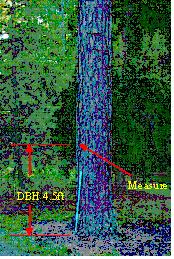
Normal
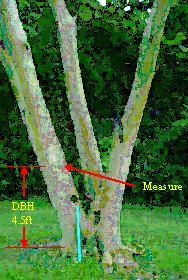
Below DBH
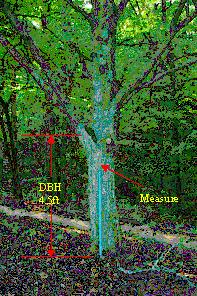
Branch or Gall at DBH
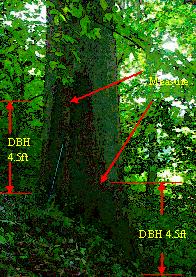
On a slope
If tree branches below DBH, measure the thickest branch above 4 ½ feet.
If tree has a canker, gall or branch at 4 ½ feet, measure the smallest point below 4 ½ feet.
If tree is located along a slope, measure at 4 ½ feet on the high side and 4 1/2 feet on the low side and take the average.
-
2. Tree Height
Total height is measured as the vertical distance between a horizontal plane passing through the center of the base of the tree and a horizontal plane passing through the topmost twig of the tree.
Measure the vertical distance from the ground to the tip of the top-most branch (Dead or Alive) with any suitable hypsometer available such as clinometer, transit, haga altimeter or other instrument.
Remember, in order for the height to be accurate, the horizontal distance used for any of these instruments must originate 90o below the top-most twig.
This origin can be found using a string with a weight attached. Move far enough away from the tree so that you can see the top-most twig. Line the string up with the top-most twig. Where the string meets the ground in your view will be one line of sight underneath the top-most twig. A partner or yourself can mark this line of sight by scraping a stick along the ground in the same line of sight. After marking the first line of sight, a second line of sight (45-90o from the first) is located by using the same procedure. Basically, where the two lines of sight cross will be 90o below the top-most twig, and this is the point from which to measure the horizontal distance when using a hypsometer.
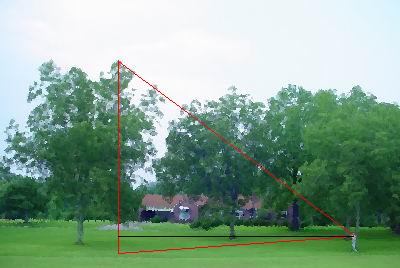
Measuring Height
Alternatively, you can use the stick method:
Hold the stick at its base vertically; making certain that the length of the stick above your hand equals the distance from your hand to your eye. Staying on ground level (or on the same contour as the base of the tree), move away from the tree while sighting the point below the top-most twig above your hand. Stop when the top of the stick is level with the top of the tree. You should be looking over your hand at the point below the topmost twig of the tree and, moving only your eyes, looking over the top of your stick at the top-most twig of your tree. Measure how far you are from the tree- and that measurement - in feet - is the tree's height.
-
3. Crown Spread
Use a short string with a weight attached. Hold the string at the top and sight up the vertical cord. Move towards or away from the tree trunk until you are directly under the edge of the tree crown. Set a stake in the ground at this point. Do the same on the opposite side of the tree making sure the second stake forms a straight line with the trunk of the tree and the first stake. Use this method to find the longest diameter of the crown passing through the trunk, and measure this distance to the nearest foot with a tape. Then measure the smallest diameter of the crown passing through the center of the tree. Add the two measurements together and divide the sum by two to obtain the average crown spread.
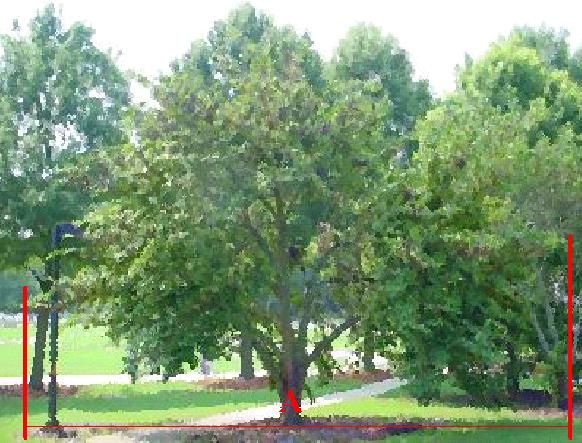
Widest
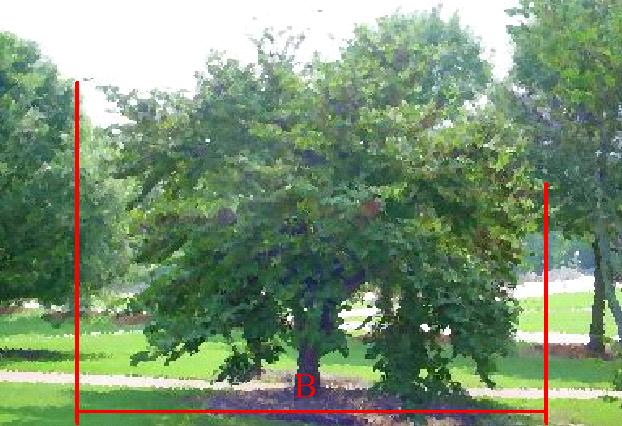
Narrowest
(Widest Spread (A) + Narrowest Spread (B)) / 2 = Average Crown Spread.
